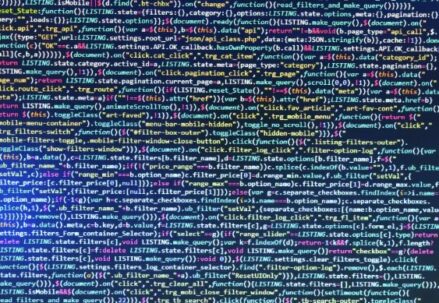Python is a flexible programming language that provides methods to work with lists, one of which is to print them out in a more legible style, free of the typical curly brackets and commas. Python is a powerful programming language, and this tutorial will teach you all you need to know to print a list without the usual commas and brackets.
Getting Started: Understanding the Basics
One must be familiar with the Python definition of a list before delving into the details. A list is a structured grouping of things, which could include things of different kinds. The typical representation of a list in Python is to add brackets and commas when printing it. In this Python tutorial, we will learn how to escape a list with commas and brackets and why this could be necessary.
Why Remove Brackets and Commas?
The ability to print a list devoid of brackets and commas is useful in many contexts, including data presentation to end users and the formatting of output for subsequent processing. As a result, the data is more readable and can be easily converted to various forms. The following are some of the more compelling arguments in favor of doing away with brackets and commas:
- Improved Readability: Brackets and commas can make list output look cluttered and less user-friendly, which is why they should be avoided when displaying lists to end users. Eliminating these characters can make your data presentation more organized and easier to understand;
- Integration with Other Data Formats: You might have to deal with data formats that don’t employ brackets and commas to express lists in data exchange and integration scenarios. If you want your Python list to be compatible with other systems and formats, such CSV, JSON, or databases, you can remove these characters;
- Aesthetic Considerations: The way data is presented can be quite important in certain situations. As a design choice, you can remove brackets and commas to make sure your data matches the style of your report or application;
- Further Processing: Remove the brackets and commas from a list to make parsing and manipulating the data easier when processing individual elements. You can use it to work with a well organized set of values devoid of any extra characters.
Removing Brackets and Commas: Methods
Given the significance of removing brackets and commas, let’s investigate different Python approaches to accomplish this. Join(), string manipulation, and list comprehension are three methods that are often utilized.
List Comprehension
To remove brackets and commas from a list in a concise and beautiful way, use list comprehension. In order to get the desired format, it is necessary to iteratively generate a new list from the list’s elements. Here’s a case in point:
original_list = [1, 2, 3, 4, 5]
formatted_list = [str(item) for item in original_list]
result = ‘ ‘.join(formatted_list)
print(result)
Output: 1 2 3 4 5
In this example, we converted each item in the original list to a string and then used the join() method to concatenate them with spaces.
String Manipulation
Removing brackets and commas using string manipulation techniques is another option. By converting the list to a string, you can remove undesired characters using string functions:
original_list = [1, 2, 3, 4, 5]
result = str(original_list).replace(‘[‘, ”).replace(‘]’, ”).replace(‘,’, ”)
print(result)
Output: 1 2 3 4 5
Here, we first convert the list to a string and then use the replace() method to remove brackets and commas.
join() Method
To unite a list’s elements using a defined separator, you can use the join() method. You can efficiently eliminate brackets and commas by using an empty string as the separator:
original_list = [1, 2, 3, 4, 5]
result = ”.join(map(str, original_list))
print(result)
Output: 12345
In this example, we used the map() function to convert each item to a string and then joined them without any separator.
Methods to Print a List Without Brackets and Commas

Python lists are versatile and widely used to store data. However, when it comes to presenting data to users or integrating it with other systems, the standard list representation with brackets and commas may not be suitable. Removing these characters can enhance readability, compatibility, and aesthetics.
Using the join() Method
The join() method is a powerful tool to convert a list into a string with specified delimiters between elements. It is highly effective for printing a list without brackets and commas.
my_list = [‘apple’, ‘banana’, ‘cherry’]
print(‘ ‘.join(my_list))
Output: apple banana cherry
In this example, we use the join() method to concatenate the elements of my_list with a space as the delimiter, resulting in a clean and comma-free representation.
| Feature | Description |
| Simplicity | The join() method is straightforward and easy to use. |
| Customizable | You can choose any delimiter to separate the list elements. |
Looping Through the List
Another approach to print a list without brackets and commas is to manually loop through the list and print each element. This method offers greater control over formatting.
my_list = [‘apple’, ‘banana’, ‘cherry’]
for item in my_list:
print(item, end=’ ‘)
Output: apple banana cherry
By specifying the end parameter as a space, we ensure that the elements are printed on the same line with spaces in between, achieving the desired format.
| Aspect | Description |
| Control | You have precise control over the output format. |
| Suitable for complex formatting | Ideal when you need to apply custom formatting to list elements. |
Using List Comprehension
List comprehension is a concise and Pythonic way to iterate over the list items and print them without brackets and commas. It combines iteration and formatting in a single line.
my_list = [‘apple’, ‘banana’, ‘cherry’]
print(‘ ‘.join([str(item) for item in my_list]))
Output: apple banana cherry
Here, we use list comprehension to convert each item to a string and then join them with a space as the delimiter, producing the desired output.
| Aspect | Description |
| Conciseness | Achieves the goal in a single line of code. |
| Efficiency | List comprehension is often faster than manual loops for simple operations. |
Utilizing the map() Function
The map() function is a versatile tool when working with lists, especially when dealing with non-string elements. It applies a function to all items in the list and can be used to convert the elements to strings before joining.
my_list = [1, 2, 3]
print(‘ ‘.join(map(str, my_list)))
Output: 1 2 3
In this example, map(str, my_list) converts each integer to a string, and then the join() method concatenates them with spaces.
| Aspect | Description |
| Applicability to various data types | Suitable for lists containing different data types. |
| Versatility | You can apply any function to transform the elements as needed. |
Using the str.strip() Method
If your goal is to remove brackets while retaining the commas, you can use the str.strip() method.
my_list = [‘apple’, ‘banana’, ‘cherry’]
print(str(my_list).strip(‘[]’))
Output: arduino ‘apple’, ‘banana’, ‘cherry’
Here, str(my_list) converts the list to a string, and then strip(‘[]’) removes the square brackets while preserving the commas.
| Aspect | Description |
| Specific formatting | Useful when you need to remove brackets but keep other characters. |
Quick Reference for Python List Manipulation Methods
Python offers several powerful methods for manipulating lists, each with its unique use cases and advantages. In this quick reference guide, we will explore some of the most commonly used list manipulation methods, including join(), looping, list comprehension, map(), and str.strip(). We’ll discuss when and how to use these methods, providing detailed examples and insights.
Method 1: join()
The join() method is an elegant solution for concatenating a collection of strings into a single string. It is particularly useful in scenarios where a list of strings needs to be combined with a specific separator or delimiter.
fruits = [“apple”, “banana”, “cherry”]
result = “, “.join(fruits)
print(result) # Output: “apple, banana, cherry”
Here, join() seamlessly combines the list of fruit names into a comma-separated string, demonstrating its utility in formatting and data presentation.
Method 2: Looping
Looping through a list is one of the most fundamental and versatile techniques in Python, offering unparalleled control in processing and manipulating each element within a list.
numbers = [1, 2, 3, 4, 5]
squared = []
for num in numbers:
squared.append(num ** 2)
print(squared) # Output: [1, 4, 9, 16, 25]
In this example, a for loop is used to iterate through a list of numbers, squaring each number and appending it to a new list, thus showcasing the power of looping in transforming list data.
Method 3: List Comprehension
List comprehension is a concise and efficient way to create new lists. It transforms the task of iterating over a list and applying an operation to each element into a clear and concise single line of code.
numbers = [1, 2, 3, 4, 5]
squared = [num ** 2 for num in numbers]
print(squared) # Output: [1, 4, 9, 16, 25]
This example highlights the elegance and readability of list comprehension, making it a preferred choice for Python programmers when dealing with list transformations.
Method 4: map()
The map() function is an integral part of functional programming in Python. It applies a specified function to each item in an iterable, such as a list, and returns an iterable map object.
numbers = [1, 2, 3, 4, 5]
squared = list(map(lambda x: x ** 2, numbers))
print(squared) # Output: [1, 4, 9, 16, 25]
This demonstrates how map(), coupled with a lambda function, can efficiently process and transform list items, making it a powerful tool for data manipulation.
Method 5: str.strip()
The str.strip() method is commonly used for cleaning up strings by removing unwanted characters (defaulting to whitespace) from both the beginning and the end.
text = “[1, 2, 3, 4, 5]”
cleaned_text = text.strip(“[]”)
print(cleaned_text) # Output: “1, 2, 3, 4, 5”
Here, str.strip() is showcased as an effective method for trimming specific characters from strings, useful in data cleaning and preparation tasks.
Conclusion
Printing a list without brackets and commas in Python is a common task that can be achieved through various methods, each suited to different scenarios and data types. Whether you choose the simplicity of the join() method, the control of a loop, the conciseness of list comprehension, the versatility of the map() function, or the specificity of the str.strip() method, you now have the tools to display your lists in Python exactly how you want them.
Remember, practice is key in mastering these techniques. So go ahead, try these methods out, and enjoy the cleaner, more professional-looking outputs in your Python projects!
FAQ
Q: What if my list contains integers or other non-string types?
A: Use the map() function to convert each element to a string before using the join() method.
Q: Can I use these methods with nested lists?
A: These methods work best with flat lists. For nested lists, you’ll need additional processing to flatten them first.
Q: Is there a way to customize the separator between elements?
A: Absolutely! In the join() method, you can specify any string as a separator, like a newline character \n or a tab \t.
Q: Are these methods efficient for large lists?
A: The join() method is generally efficient for large lists. For extremely large lists, performance may vary, and it’s advisable to test and optimize based on your specific case.
Q: Can these techniques be used with tuples or sets?
A: Yes, these methods can be adapted for tuples and sets, though you might need to convert them to lists first.




